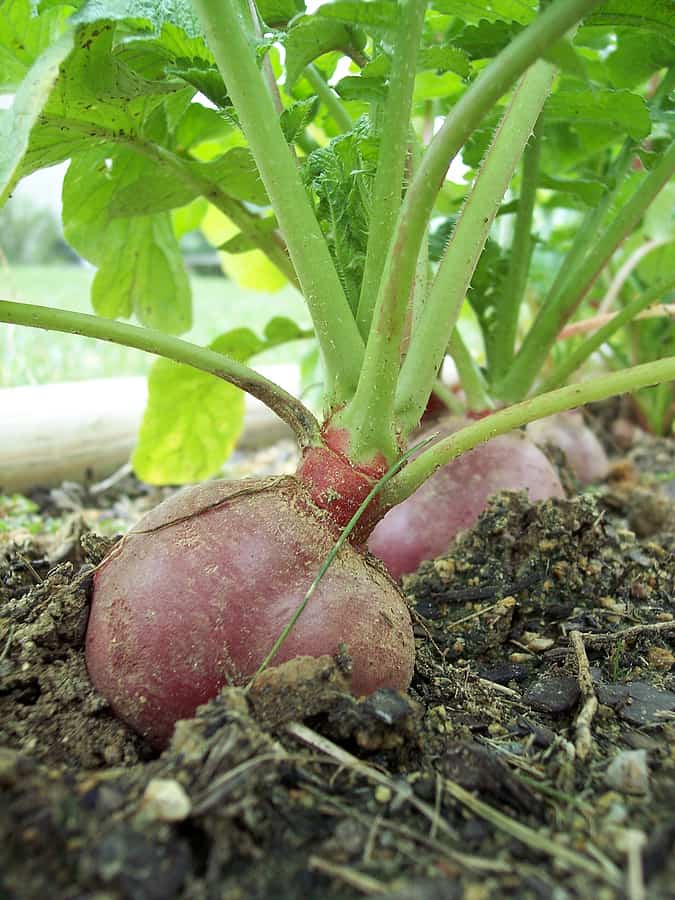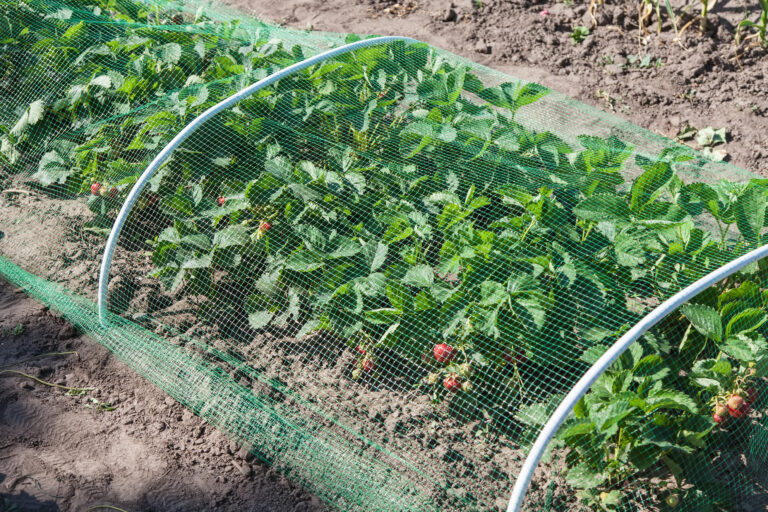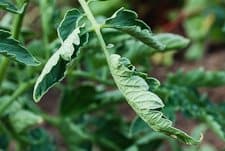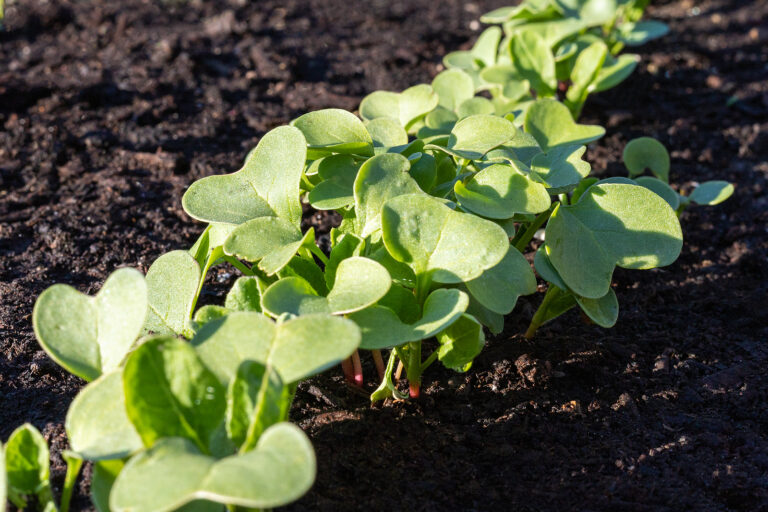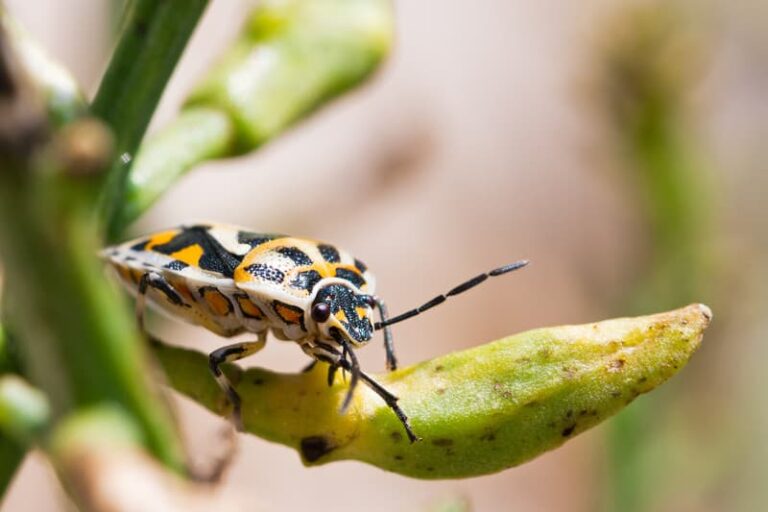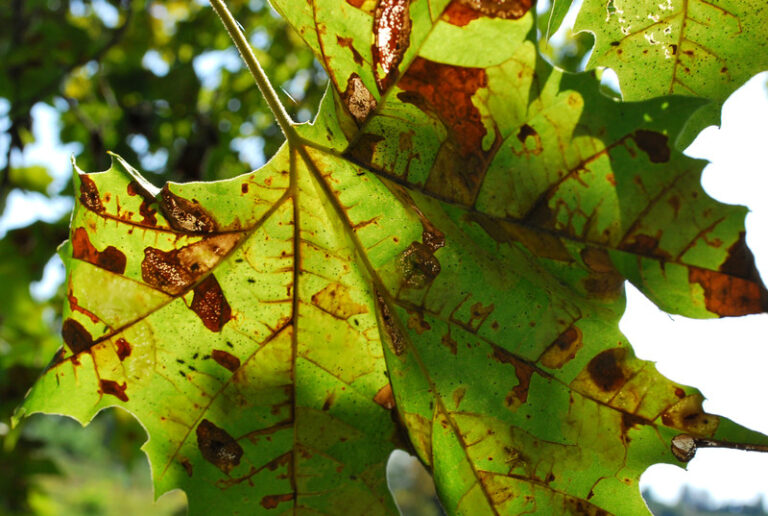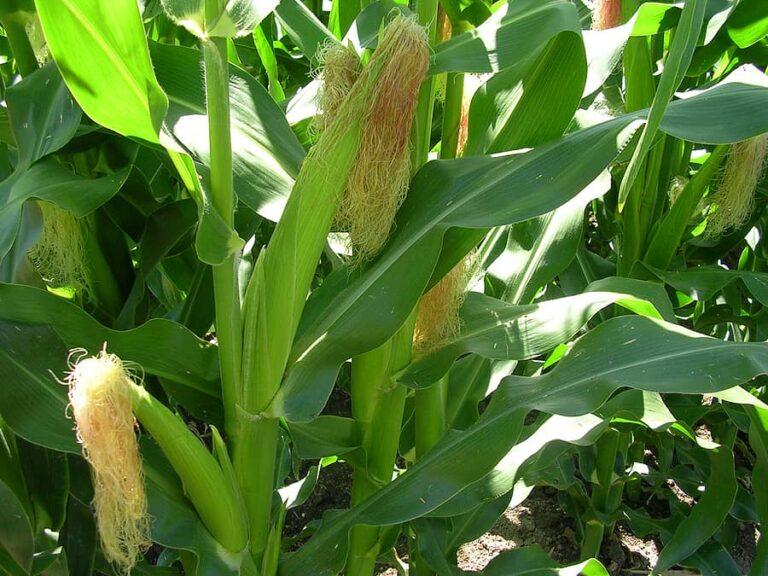Common Radish Pests and Diseases: How to Control Them Naturally
Radishes are a cool weather crop that will tolerate some heat.
Sow radishes in the garden as soon as the soil can be worked in spring and plant succession crops every 10 days until the end of spring.
Lifting radishes as soon as they are large enough to eat is important. Radishes that stay too long in the garden will become woody.
Radishes germinate readily and grow rapidly so don’t sow radishes too thickly and thin seedlings right away so that they don’t stand closer than 1½ inches apart.
Here are radish growing problems and solutions:
Seeds and seedling problems
Roots fail to form
Seeds are sown too thickly. Thin radishes early and harvest roots as soon as they are large enough to eat. Thin seedlings to 1½ to 2 inches apart.
Seeds rot or seedlings collapse with dark water-soaked stems as soon as they appear
Damping off is a fungus that lives in the soil, particularly where humidity is high. Do not plant in cold, moist soil. Make sure the soil is well drained.
Tiny shot holes in the leaves of seedlings
Flea beetles are tiny bronze or black beetles a sixteenth of an inch long. They eat small holes in the leaves of seedlings and small transplants. The larvae feed on the roots of germinating plants. Spread diatomaceous earth around seedlings. Cultivate often to disrupt the life cycle. Keep the garden clean.
Leaf problems
Pale yellow, gray spots on leaves appear; water-soaked spots appear; spots become circular with gray centers
Leaf spot or Septoria leaf spot is a fungus disease. Add organic matter and make sure the planting bed is well drained. Remove and destroy infected leaves and plants. Rotate crops. Keep the garden free of plant debris.
Leaves have whitish or yellowish spots; leaves are deformed; plants wilt
Harlequin bugs are black with bright red yellow or orange markings. They suck fluids from plant tissue. Handpick and destroy bugs and egg masses. Keep the garden free of crop residue and weeds where bugs breed.
Leaves turn dull yellow, curl, and become brittle; plants yellow and are stunted
Aster yellows is a mycoplasma disease spread by leafhoppers. Remove infected plants. Control leafhopper. Keep the garden free of weeds which can harbor disease.
Leaves have pale green spots on the upper sides and violet-colored downy growth on the undersides
Downy mildew is caused by a fungus. Avoid overcrowding; improve air circulation. Avoid overhead watering. Remove and destroy infected plants. Keep the garden free of plant debris. Rotate crops.
Lower leaves cup or roll, lose their dark green color and become streaked and leathery; brown speckling at the stem end of roots
Leafroll virus is transmitted primarily by aphids. Control aphids. Remove diseased plants and weeds.
Leaves yellow; plants wilt and appear weak; sunken, red oval spots at the base of stem; roots have red spots or streaks; plants turn brown and decay
Rhizoctonia or Fusarium root or stem rot is a fungal disease that favors warm soil. Remove infected plants and plant debris that harbor fungus. Rotate crops. Be sure transplants are not diseased. Rotate crops regularly. Solarize the soil in late spring or summer.
Leaves yellow between veins; leaf margins brown and curl upward; stem base becomes dark brown, black, and slimy; roots become slimy brown-black at the stem end
Blackleg is a fungal disease. Add organic matter to the planting bed; make sure the soil is well-drained. Rotate crops.
Root problems
Tunnels and grooves in roots; leaves become faded
Root maggots are small gray-white, legless worms to ⅓-inch long; adult looks like a housefly. Flies lay eggs in the soil near the seedling or plant. Apply lime or wood ashes around the base of plants; time planting to avoid insect growth cycle. Plant a bit later when the weather is drier.
Roots are hot tasting and pungent
Soil is too dry or soil temperature is too hot, above 90°F. Protect roots and cool soil with 2 to 3 inches of organic mulch. Water radishes 2 to 3 hours at a time; do not water again until the soil has dried out to a depth of 4 inches.
Roots are woody and pithy
Soil temperature is too high or watering has been spotty. Keep roots covered with soil or mulch to avoid soil warming. Keep radishes evenly moist through the growing season; do not allow them to dry out. Harvest roots as soon as the roots are big enough to eat. Do not let radishes sit in the garden.
Roots are cracked
Harvest radishes before they reach full size for the best flavor and to avoid cracking. Radishes in the ground too long may crack. Cracked roots are susceptible to fungal disease.
Radish growing success tips
Planting
Radishes grow best in full sun. Plant radishes in the partial shade of taller crops where the weather is very warm. Grow radishes in loose, well-drained soil. Turn the soil to at least 12 inches deep before planting long-rooted radishes.
Planting time
Sow radishes in the garden as early as 5 weeks before the average last frost date in spring. For a continuous supply, sow radishes every 7 to 10 days. Stop planting radishes when daytime temperatures average greater than 80°F. Radishes do not grow well in hot weather; they will become pithy and pungent flavored. For a fall crop, sow radishes so that they come to maturity before the first average frost date in autumn. Daikon is well suited for a fall crop.
Care
Radishes require consistent even moisture for quick growth. Thin radishes shortly after seedlings emerge; radishes are quick growers and need spacing of 1½ inches between seedlings for quick root growth. (Thinned leaves and roots can be eaten in salads.) Keep planting beds weed-free. Add aged compost to radish planting beds on a regular basis. Spread age compost or organic mulch across planting beds to keep the shoulders of maturing radishes well-covered and cool.
Harvest
Lift radishes when they are young and tasty. Spring radishes are best when they are no more than 1 inch in diameter. Winter radishes and daikon can be lifted as you need them until the first frost, but be sure to protect them from cold weather; add a layer of straw mulch or compost.
Radish articles on Harvest to Table:
How to Plant, Grow, and Harvest Radishes
Radish Growing Problems Troubleshooting
Tasty Ways to Cook and Serve Radishes
Radish Root and Leafy Green Salad
How to Make Savory Radish-Cabbage Coleslaw
Related articles:
Vegetable Garden Diseases Problem Solver
Vegetable Garden Organic Weed Control
Garden Planning Books at Amazon:

